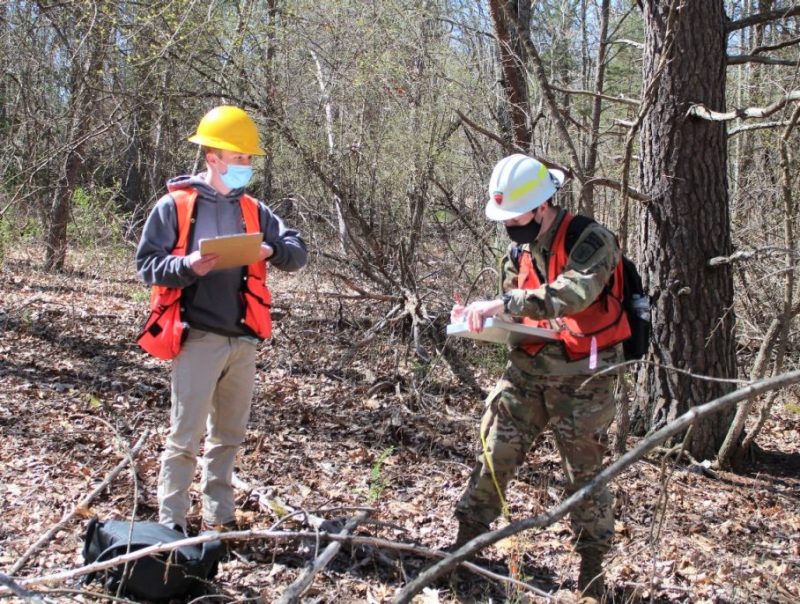
Imagine an acre of forest.
In Southwest Virginia, that acre might contain oaks and eastern redbuds. It might contain tall, creaking ash trees killed by invasive insects, or white pine blistering with a fungal invasion. It could be home to foxes or raccoons, to barn owls or pileated woodpeckers. The understory might have useful plants such as goldenseal or American ginseng rising out of the fertile soil, or invasives like autumn olive threatening to alter the ecosystem.
Now expand that one acre to 80 acres and imagine trying to document all of it, and then formulating a strategy for managing it.
That work — developing a forest management plan — is the task assigned to teams of seniors enrolled in the Integrated Forest Management Practicum, a capstone course for forestry majors in the College of Natural Resources and Environment.
“The first step is meeting with the landowner and finding out what they want to do with their forest,” explained Associate Professor Scott Barrett of the Department of Forest Resources and Environmental Conservation. “Then our students go onto the property and do an inventory of the forest resources that are available to work with. They divide the property into management units called stands, and then they present a management recommendation to the landowner.”
For the students, who will graduate from the only four-year forestry program in Virginia accredited by the Society of American Foresters, this experience is the culmination of experiential learning, taking what they’ve learned in the classroom and the lab and applying it to a real-world field project.
“What this class is doing is taking all of our classes and bringing them together towards one project,” said Leah Wood, a senior pursuing dual degrees in forestry and wildlife conservation. “It’s a challenge, but we’ve already done inventory and plotting and other forestry work in labs, which has made the transition to taking on a big project easier.”
With COVID-19 restrictions making group travel difficult, students have worked closer to campus than normal, with teams working on private land in Blacksburg and on land owned by the New River Resource Authority in Floyd County.
Their onsite work is supported by regular Zoom meetings with faculty and classmates, as well as refresher lectures on subjects such as silviculture, economics, forest measurements, and using fire as a management tool.
Some students have gotten a jump on their inventory work by using new technologies to learn about sites before getting their boots on the ground.
“I learned a lot about using geospatial information in programs such as ArcGIS, and that let me do some analysis on the property before we got there,” said senior Riley Ripa. “Before going to the property, I already knew how big it was, what percentage of the land was forested, and what the soil type is there. I was even able to identify sinkholes on the landscape.”
Satellite data aside, the task of working directly with a landowner to put knowledge into action is a crucial experience for aspiring foresters.
“It’s a new challenge, working with the landowners,” said Ripa, a member of the Virginia Tech Corps of Cadets and the Forestry Club at Virginia Tech. “In class with professors and classmates, we know all of the lingo around the techniques we use, but for a landowner who might’ve just purchased the land, you have to explain the processes and the reasoning behind what you’re recommending to them.”
“There is no replacement for talking to a landowner about their forest management goals, and then getting out into the woods to develop a management plan,” said Professor Barrett. “This capstone class is important to help them bring together the many forestry skills they have learned during their time at Virginia Tech, and I’ve worked hard this year to maintain the interactive component of the experience.”
— Written by David Fleming


